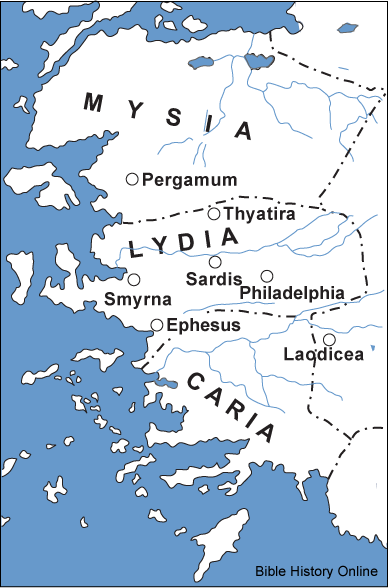Revelation 2-3: Introduces us to seven letters. These letters were written to seven Christian churches that sprang up throughout Asia Minor, which is present-day Turkey.
Although these messages applied to the experiences of the specific churches they were written to, they are also prophetic of the experiences of the Church through the centuries. Each of the letters also contains admonishments appropriate to God’s people in every age. We will concentrate largely on the prophetic aspects of the letters to the churches.
John is told, “Write the things which thou hast seen, and the things which are, and the things which shall be hereafter” (Revelation 1:19). This text reveals that John had seen the events described in visions, “which thou hast seen.” It reveals that the visions had application for his time, “the things which are.” And it reveals that the vision had application for the future, “things which shall be hereafter.” This principle is applicable to the letters written to the seven churches. The letters have a then-time and an end-time application.
The seven churches to which the letters were addressed were Ephesus, Smyrna, Pergamon, Thyatira, Sardis, Philadelphia, and Laodicea. These cities stood along one of the ancient postal Roman roads of that day, and, beginning at Ephesus, would have been visited in the order in which they are named. The distance between each is about 50 kilometres; a full day’s journey on foot.
The names of the cities are significant in that they convey a spiritual message relevant to the Church as a whole. It is incredible that their names so accurately reflect the history of the Church. It is one of the great evidences for the inspiration of the Word and the omnipotence of God. The letters contain a number of common features that applied to the Church in John’s day, but also reflect the Church in prophetic time.
Names in ancient times conveyed a message. One of the names given to the Messiah was Emmanuel, conveying the message that God would live among us. In the same way, the names of the seven cities convey a message about the state and nature of the Church from John’s time to the end of time.
Read about the letters to each of these churches:
1. Letter to Ephesus (which means “desirable”)
2. Letter to the Church at Smyrna (which means “sweet smelling,” like myrrh)
3. Letter to Pergamon (which means “elevation” or “exalted”)
4. Letter to Thyatira (which means “sacrifice of contrition” or “sweet savor of labor”)
5. Letter to Sardis (which means “renewal”)
6. Letter to Philadelphia (which means “brotherly love”)
7. Letter to Laodicea (which means “judgment” or “judging the people”)

